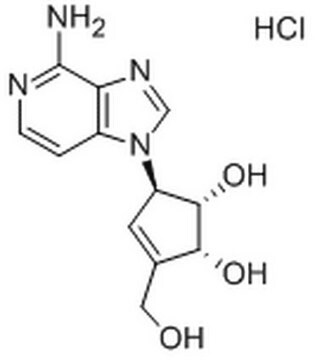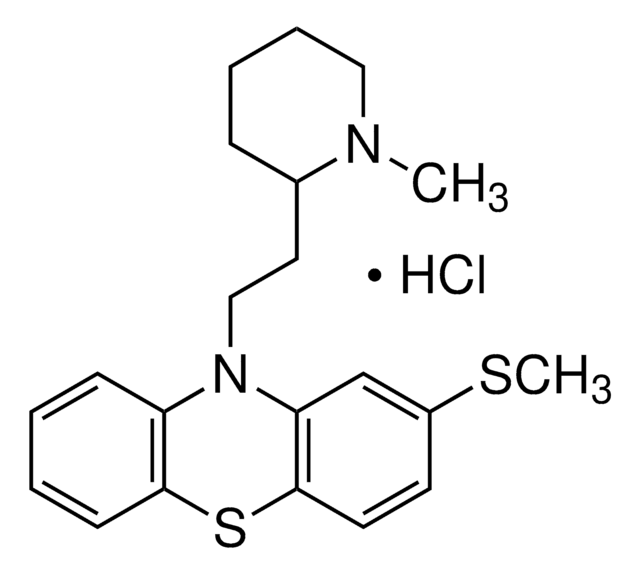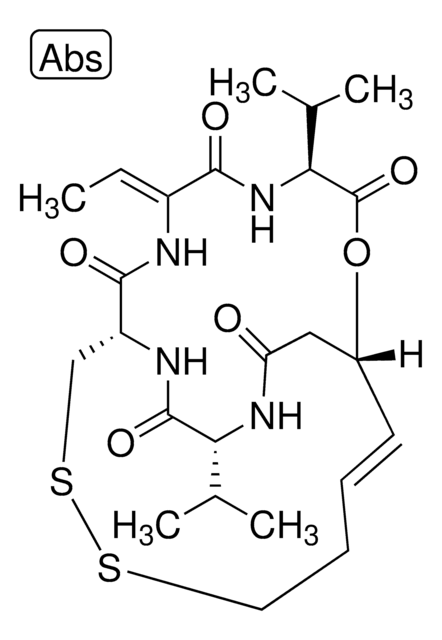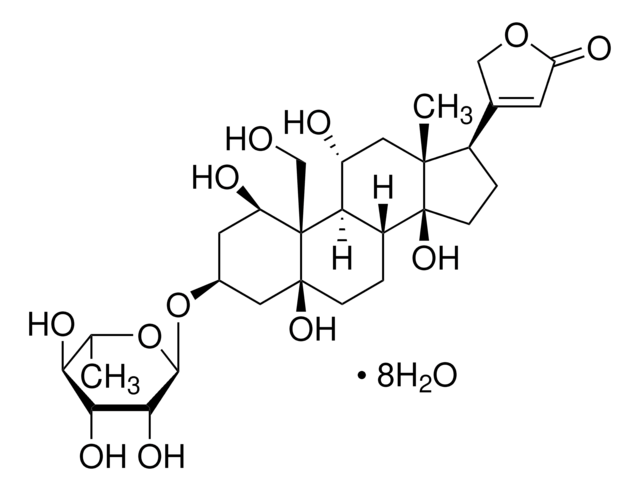C9492
Chaetocin from Chaetomium minutum
≥95% (HPLC)
Synonym(s):
(+)-Chaetocin A
About This Item
Recommended Products
Quality Level
assay
≥95% (HPLC)
form
powder
storage temp.
2-8°C
SMILES string
CN1C(=O)C23CC4(C(Nc5ccccc45)N2C(=O)C1(CO)SS3)C67CC89SSC(CO)(N(C)C8=O)C(=O)N9C6Nc%10ccccc7%10
InChI
1S/C30H28N6O6S4/c1-33-21(39)27-11-25(15-7-3-5-9-17(15)31-19(25)35(27)23(41)29(33,13-37)45-43-27)26-12-28-22(40)34(2)30(14-38,46-44-28)24(42)36(28)20(26)32-18-10-6-4-8-16(18)26/h3-10,19-20,31-32,37-38H,11-14H2,1-2H3
InChI key
PZPPOCZWRGNKIR-UHFFFAOYSA-N
Looking for similar products? Visit Product Comparison Guide
General description
Application
Biochem/physiol Actions
Preparation Note
signalword
Warning
hcodes
Hazard Classifications
Acute Tox. 4 Oral
Storage Class
11 - Combustible Solids
wgk_germany
WGK 3
flash_point_f
Not applicable
flash_point_c
Not applicable
ppe
dust mask type N95 (US), Eyeshields, Gloves
Choose from one of the most recent versions:
Already Own This Product?
Find documentation for the products that you have recently purchased in the Document Library.
Customers Also Viewed
Articles
Epigenetic modifications are thought to occur through two key interconnected processes—DNA methylation and the covalent modification of histones.
Our team of scientists has experience in all areas of research including Life Science, Material Science, Chemical Synthesis, Chromatography, Analytical and many others.
Contact Technical Service
















